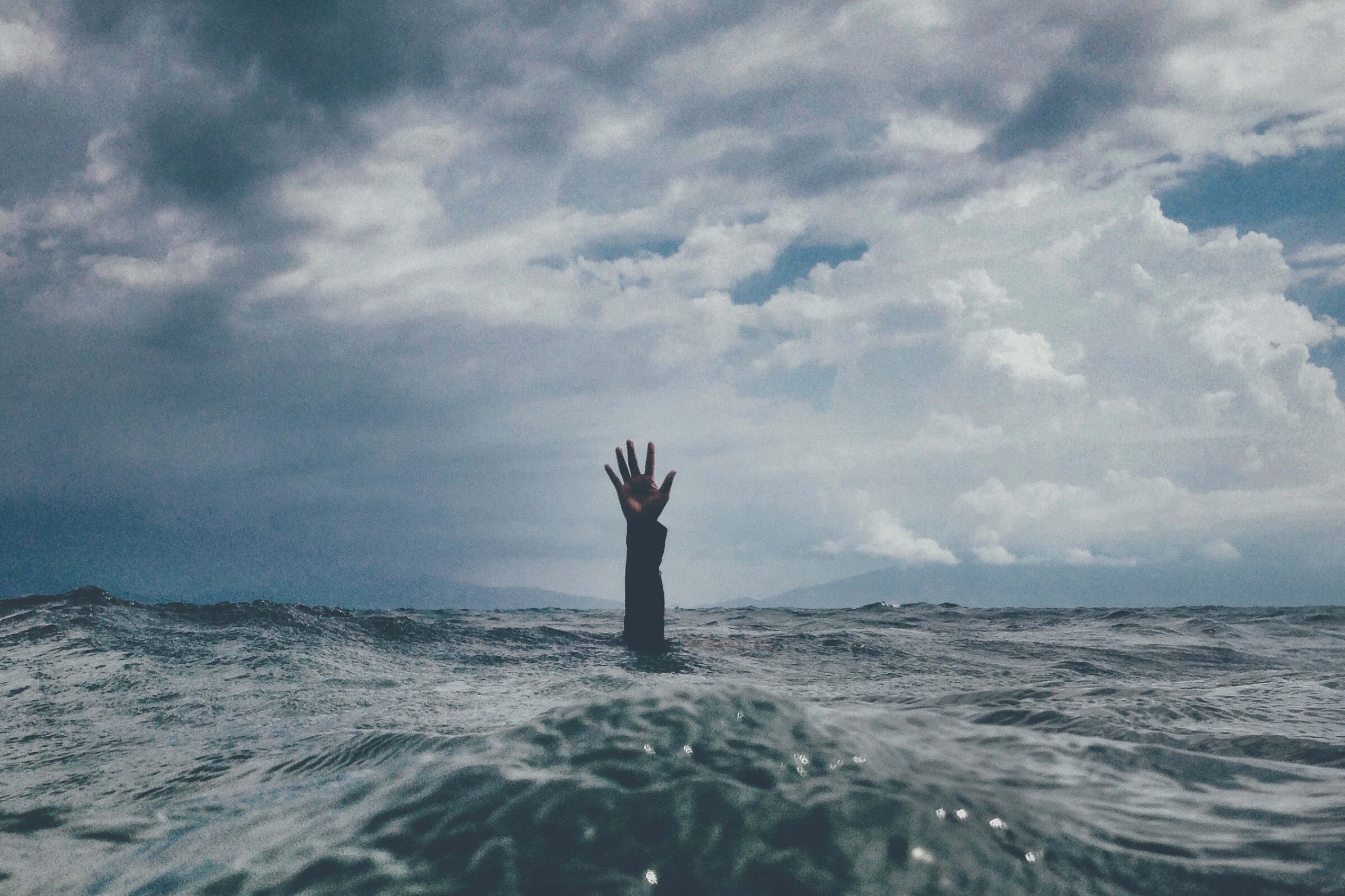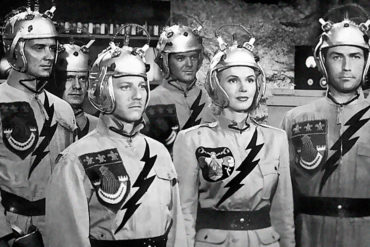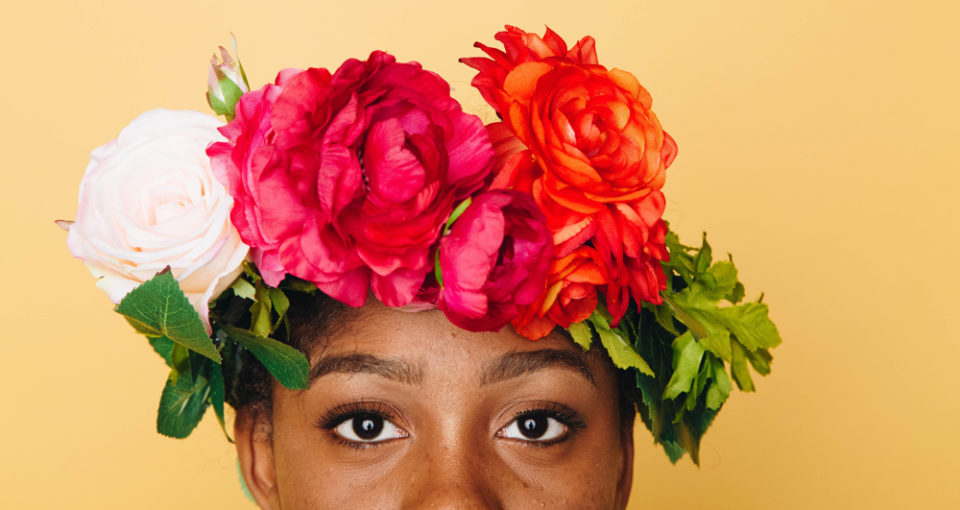It is always an interesting experiment to go to Art Basel in Miami with the intent of discovering contemporary Jewish art for my site Jewish Art Now. The odds are good that there will simply be nothing to report on. Last year I attended with the same focus, and found not much more than a photograph of Spider-Man praying at the Western Wall (as great as that was).
From my seat in the Brooklyn Jewish creative scene it can seem like every day another artist is popping up full of vim for incorporating religion into their artwork. But the reality is, there are very few people on the professional scale, especially at an internationally renowned art fair, who are actively showing off Jewish-content artwork. And yet, it was there on display if you knew where to look. Across the main show and several other satellite fairs across the city, I found a handful of artists who range in experience and media, united through an interest in exploring Jewish themes.
The main Art Basel fair is a sight to behold. Occupying the entire Miami Beach Convention Center, it can feel like walking through an informal museum where the biggest names in modern and contemporary art hang alongside each other. It is ever so posh and way out of the league of most anyone who would engage in what I am looking for, save “classic” names like Chagall or Agam.

The only piece that came close was Mel Bochner’s “The Joys of Yiddish”, a new piece featuring gold words screenprinted on black felt that evokes an old Jewish man wearing a velour track suit who might use these less-than-complimentary phrases. But still, I was looking for meat. I wanted to find something that not only was tangential phrasing from a bygone era, but that speaks to spirituality and the issues of today.
[showhide type=”pressrelease” more_text=”Click to show image (may be considered inappropriate)” less_text=”Hide image” hidden=”yes”]
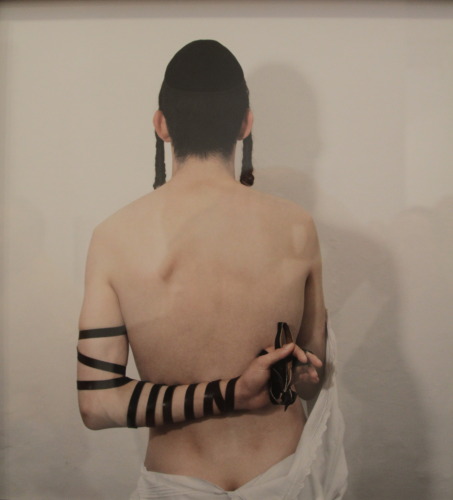
[/showhide]
The next day, I attended shows in Midtown Miami’s Design District. At “Art Miami” one photograph caught my eye, of a shirtless Hassidic man facing away and holding up his Tefillin (ritual leather straps and boxes containing a portion of Torah worn by men for morning prayers). The gallery exhibiting it was from Germany, which made the find even more interesting. “Tfillin Schel Jad” is the work of Berlin-based Israeli-born Benyamin Reich. A wave of young Israelis have, in the past decade, moved to Berlin to pursue financial independence and the strong art scene there, Reich included. But he brought with him the echoes of his Haredi Orthodox Jewish upbringing, which have become a major wellspring from which he draws inspiration. This sensual portrait is personal in an almost uncomfortable way; we know we are seeing something private that maybe we should not. And that’s what makes what Reich offers so interesting. Whether photographing a Haredi couple in their bedroom or recreating his version of the biblical almost-sacrifice of Isaac by Abraham, the artist is drawing us into quiet, intimate moments.
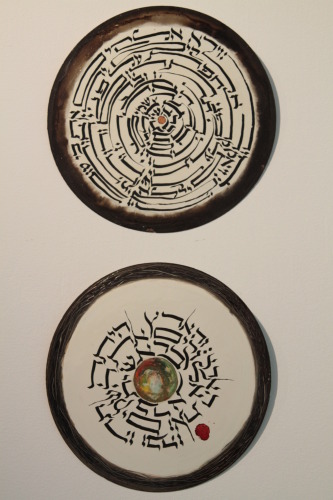
At the “Red Dot” fair, painter Igal Fedida, one of the artists I had been looking forward to seeing, showed off his Genesis Series. These explosive meditations on creation include works on canvas, metal, and wood. They range from the larger 35”x 60” “From Void to Existing” to smaller works like the 22” circular “Galgal” pieces. Fedida plays with a chaos of abstract imagery and the precision of Hebrew typography to address the concept of G-d’s creation of the universe through speech. Most impressive was “Bo-Hu” a 36”x 48” piece that seamlessly combines both elements and allows the viewer to decide whether there is a flow of movement cascading downward or emerging upward. It is also significant for placing the complete Hebrew alphabet in order, save the letter “Bet”, which normally is second but here is placed first. This is a reminder of how the word “Beresheit” (creation), and therefore the entire Torah, begins with this letter.
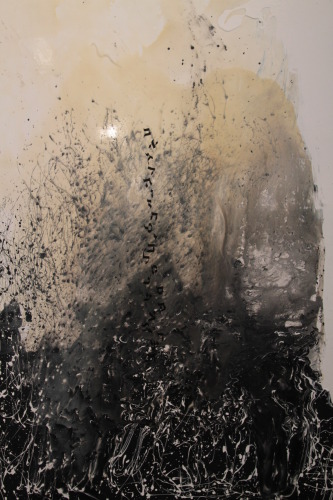
Finally I was getting somewhere with my pursuit and it was paying off in a big way. There was a lot to meditate over in Fedida’s work, and as I wandered away from his booth in a haze, a large and colorful photograph caught my eye. Bruno Zerdoun’s “Standing Out” did just that, as I recognized posters advertising a Simchat Torah celebration at the Chabad of the Grove plastered over a graffiti strewn wall. In the image is a very modern Chabad Rabbi who is walking past with a confidence that places him comfortably in colorful and exciting surroundings (Zerdoun, who I met at the booth, embarrassingly acknowledged that he had spelled “Simchat” incorrectly in Hebrew).
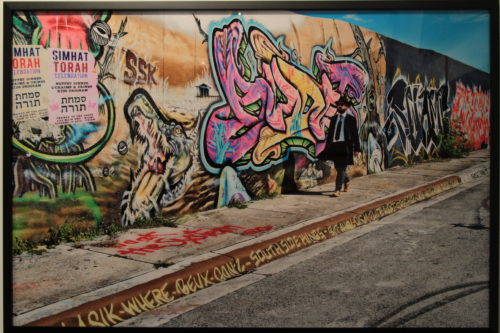
Matching this piece was “Lookout”, a similar image that seemed to exemplify the Chabad way of life. This Rabbi tips his hat to a poster of his Rebbe which proudly proclaims “Torat Emet” (The Bible is Truth) as he carries what appears to be a Tefillin bag, and passes a mural that works figuratively for the diversity of colors and patterns these Rabbis encounter as they are sent to help Jews wherever they may be in the world. The artist, who is casually religious and wrangled his own Rabbi into the photos, admitted that he was exhibiting publicly for the first time. He was quite nervous about the entire experience, but I assured him that the works were effective and that he should consider pursuing Jewish content as long as he is expressing some truth from within himself.
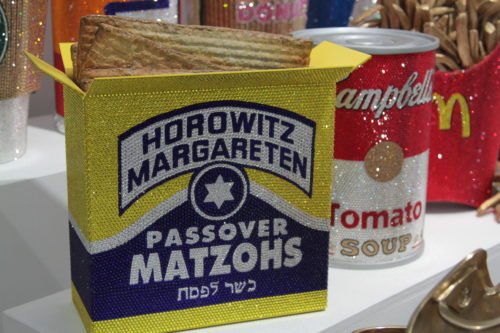
I ended my week with a visit to South Beach’s Scope Fair, consistently my favorite show of them all. Filled with amazing and inspirational art, Scope’s only Jewish piece I found was Jonathan Stein’s Bronze and Swarovski Crystal giant box of matzos. Though impressive, when lumped in with the other over-sized corporate food items like a Starbucks Coffee cup, Campbell’s Soup or McDonald’s Fries, it seems to be making a statement about the mass production and typical insignificance of a standard Passover matzo. Unfortunately it seemed like no one wanted the matzos, as just about all the other pieces had sold.
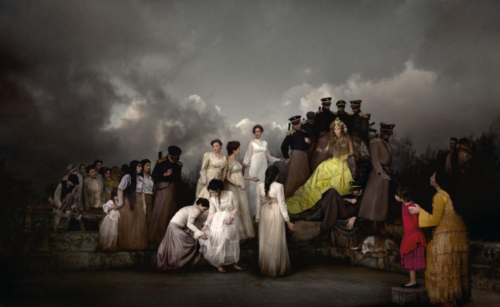
As I doubled back around I’d realized that I missed the number one artist I had in mind when heading to Scope, and approached their gallery about it. Michal Baratz Koren is a brilliant Israeli photographer, but since her work was not on the walls of Corridor Contemporary’s booth they handed me an archival portfolio to carefully leaf through. Koren’s photos recall painters like Rembrandt, whose Biblical narratives and chiaroscuro lighting still stand as some of the best Jewish artwork of all time. Here the artist specifically focuses on depicting Biblical women, but ignores the most well known of our matriarchs, and sets them in the recent past in such a beautiful way that evokes the greater narratives at play. To have the opportunity to analyze an entire collection of pieces, as well as see small prints of the sketches that preceded the meticulous productions was a marvel. It was a perfect way to cap off my journey and allowed her artwork to linger in my mind well past the trip. I don’t know if a book is planned to widely distribute this portfolio, but if there is I would want one of the first copies.


